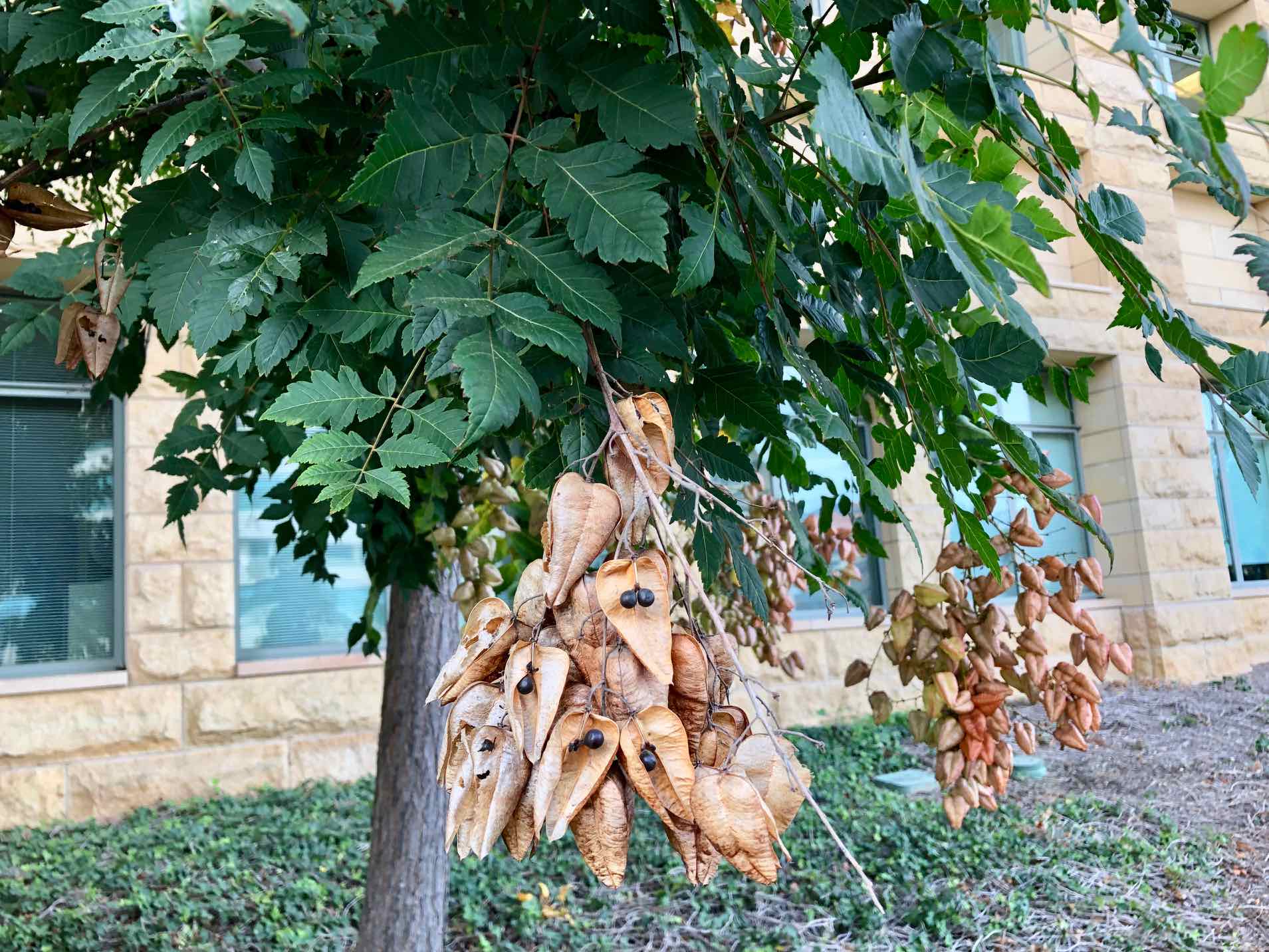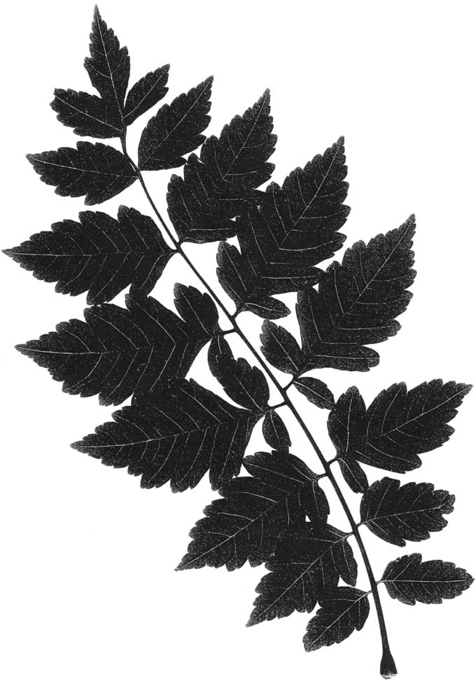Koelreuteria paniculata
 goldenrain tree
goldenrain tree

One of the five official memorial trees from ancient times in China, the goldenrain tree was reserved for the tombs of scholars. The compound leaves are about a foot long with 7 to 15 leaflets each of which is itself more or less deeply lobed or serrated. The large foot-long clusters of yellow flowers, which can be used for making a yellow dye, give way at the end of the summer to conspicuous brown, papery pods resembling Chinese lanterns with internal pockets containing three hard, ¼-inch black fruits, each almost filled by one seed. The leaves turn yellow, brown, and red before falling. The tree is resistant to frost and is suitable for alkaline soils.
One grows at the right of the entrance of Gates Computer Science Building. A formerly fine planting along the east side of Schwab Residential Center had declined, by the late 2010s, to three trees and nine sprouting stumps. One remains of two that were mixed in among the K. bipinnata around the lawn and sand volleyball court of Willis Court at Rains Houses.
Other campus genera in the soapberry family are Alectryon, Cupaniopsis, and Dodonaea. Recent phylogenetic analyses place Acer and Aesculus in this family as well.
Name derivation: Koelreuteria – after J.G Koelreuter (1733–1806), German professor of botany; paniculata – with flowers in panicles.
About this Entry: The main text of this entry is from the book Trees of Stanford and Environs, by Ronald Bracewell, published 2005. Family notes added by John Rawlings and SP. Gates & Rains locations added, Schwab locations edited; all locations up to date (Apr 2020, SP). Rains lost a tree (Sep 2024, SP).




